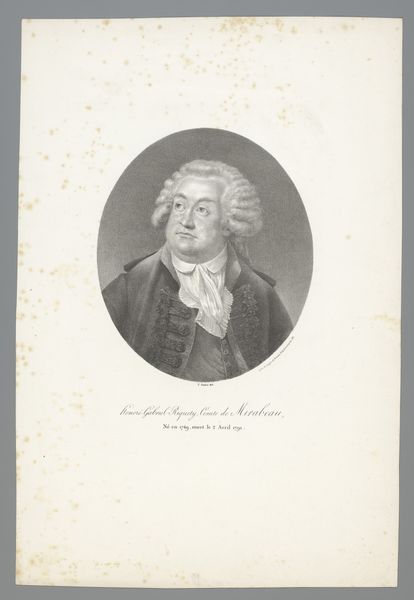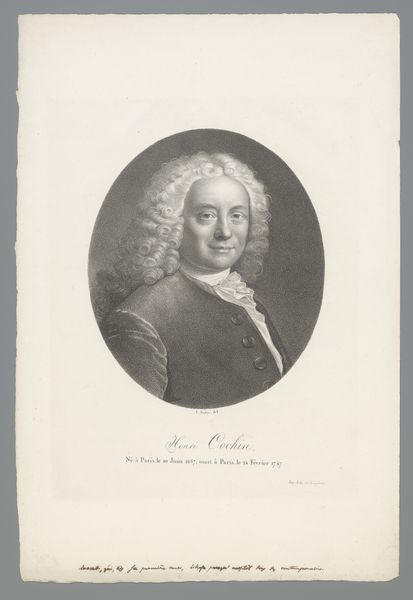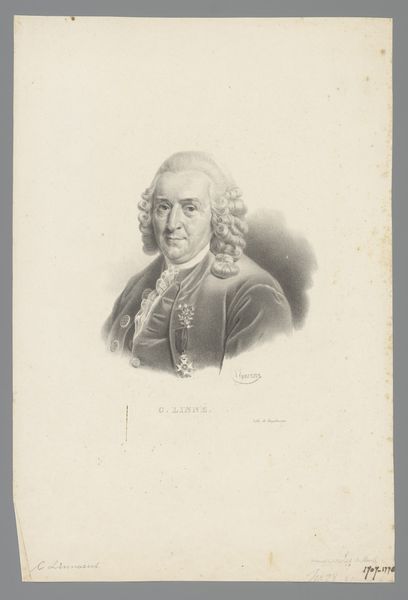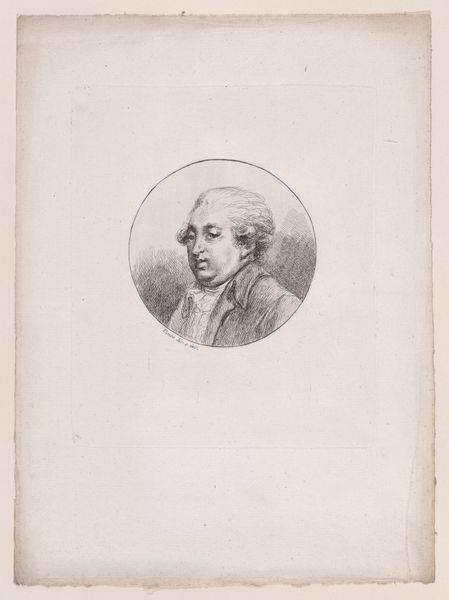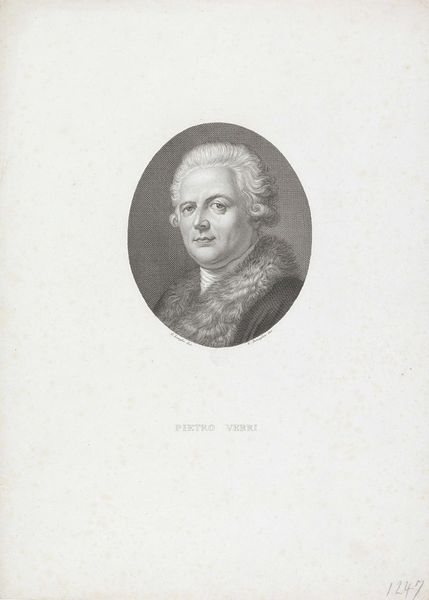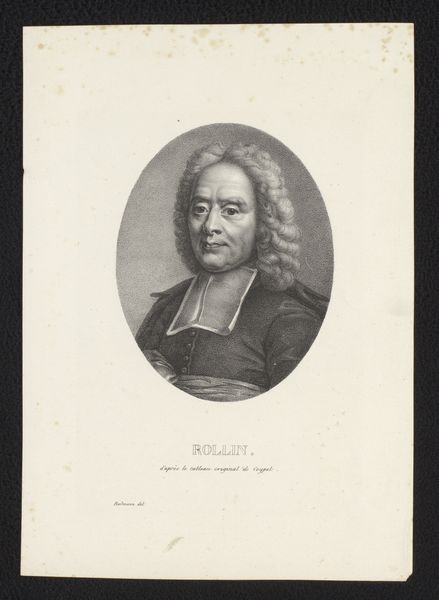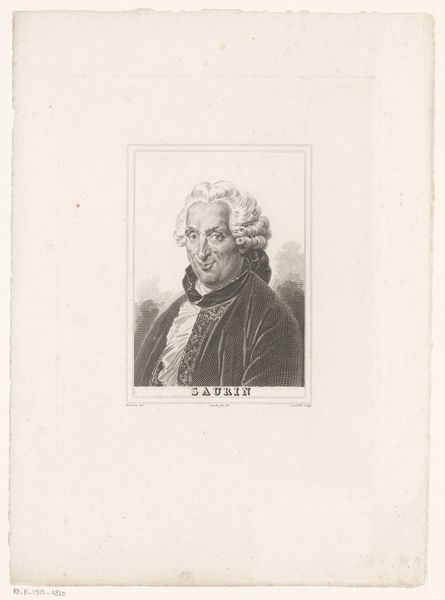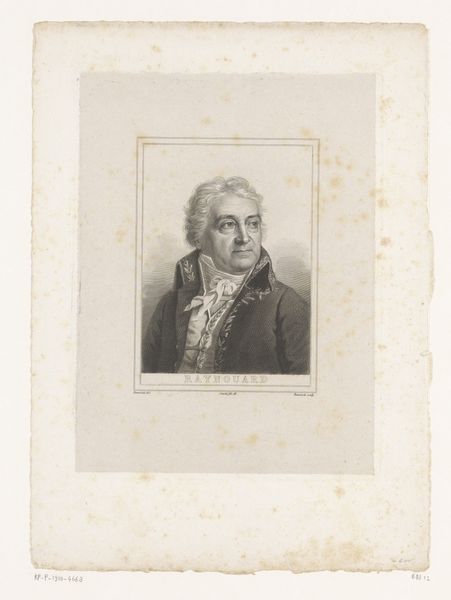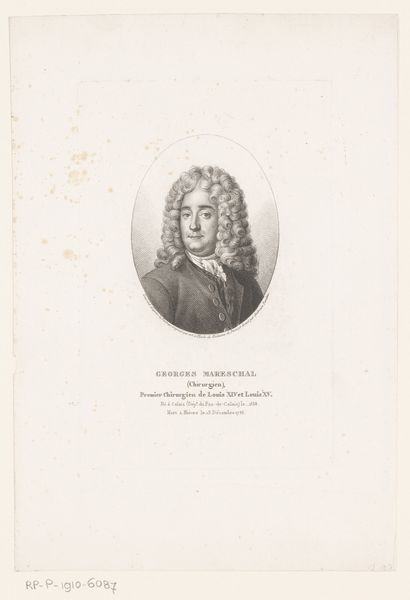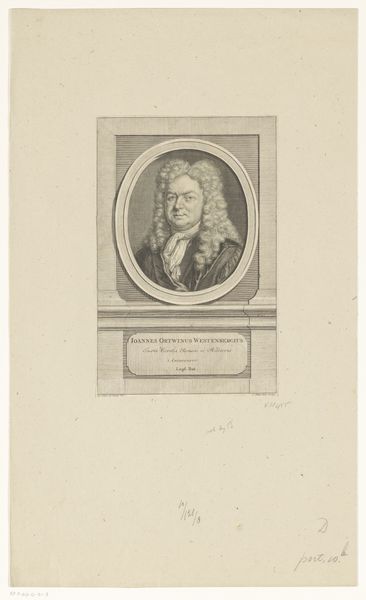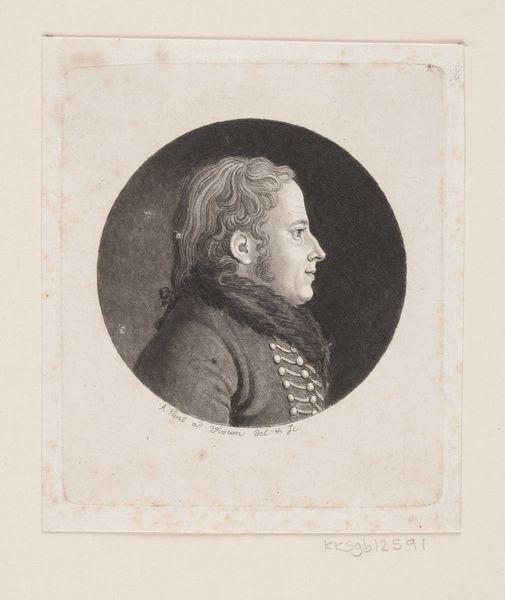
print, engraving
#
portrait
#
neoclacissism
# print
#
history-painting
#
academic-art
#
engraving
Dimensions: height 497 mm, width 340 mm
Copyright: Rijks Museum: Open Domain
Curator: My first impression is of formality and restraint, a very proper depiction. Editor: Indeed. What we're looking at is a portrait of Jean Baptiste Rousseau, rendered between 1820 and 1827. It's the work of Jean Pierre Sudre, made with meticulous engraving, held in the Rijksmuseum collection. The print evokes a neoclassical aesthetic. Curator: I'm struck by the whiteness, the overwhelming paleness, it really jumps out, as the most prevalent element, beyond even the subject's face. This stylistic choice serves as a potent symbol, right? A signifier for ideas linked to power structures of the time. Editor: Absolutely. The elaborate wig, for example, embodies status and adherence to convention within a very specific cultural milieu. The clothing, though understated, subtly conveys wealth and social standing. Think about what these visual cues communicated in post-revolutionary France. Curator: And how did it feel to be excluded from that world? Whose stories remain unseen within these hallowed halls? Who was permitted such meticulous portrayal? Who was not? I would like to invite listeners to think about class dynamics in representations. Editor: These are valid questions, and that sense of established order certainly emanates from the image. We can also look at the recurring iconography in portraits like this. Notice the turn of the head. The direct but not confrontational gaze invites the viewer into a conversation, doesn't it? It's not a window into the soul, but into a carefully constructed persona. Curator: Precisely! That “carefully constructed persona” reveals just how pervasive these constructs were and, to a certain extent, remain. Editor: Looking at this portrait through an iconographic lens shows the persistence of visual languages. The details may change, but the underlying symbolism connected to power and recognition continues. Curator: It’s a reflection of who holds, and who controls, the metaphorical pens of history and artistry. Food for thought! Editor: Yes, a perfect synthesis of sociohistorical context with a dive into art history and powerful symbolic references, all captured in this engraving. Thank you!
Comments
No comments
Be the first to comment and join the conversation on the ultimate creative platform.
